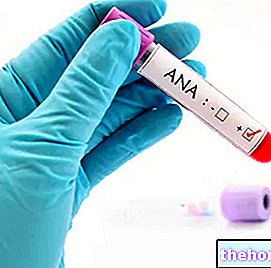The term hyperlipidemia indicates a general increase in the levels of one or more fats (or lipids) in the blood.

Hyperlipidemias can therefore be classified into:
- hypercholesterolemia: increase in the cholesterol content in the blood beyond the normal limits;
- combined hyperlipidemia: elevated blood levels of triglycerides and cholesterol;
- hypertriglyceridemia: excess of triglycerides in the blood;

REFERENCE VALUES
Triglycerides:
- normal: <150 mg / dL
- borderline elevated: 150-199 mg / dL
- high: 200-499 mg / dL
- very high: ≥ 500 mg / dL
Cholesterol:
- normal: <200 mg / dL
- borderline elevated: 200-239 mg / dL
- high: 240-299 mg / dL
- very high: ≥300 mg / dL
In-depth articles:
Cholesterol
Cholesterol Diet
Plant sterols
Triglycerides
Triglycerides and diet
















.jpg)











